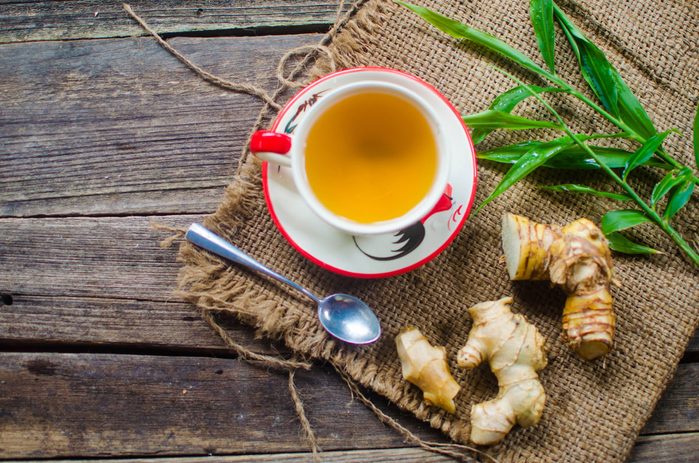Sip ginger tea for arthritis pain relief
Numerous studies have found that ginger can mimic NSAIDs, the front-line drugs for arthritis pain relief. It seems to work by curbing pain-causing chemicals that are part of the body’s inflammatory response — without side effects of medication. Use powdered, raw, or lightly cooked fresh ginger liberally on food. Make your own ginger tea by simmering slices of ginger for 15 minutes in a few cups of boiling water, or buy ginger tea bags at the supermarket.

Eat inflammation-fighting foods
Ditch the fast food, junk food, fried food, and processed food. A Swedish study of rheumatoid arthritis patients found that those who switched to a Mediterranean style-eating plan (think fresh fruits, veggies, whole grains, fish, olive oil, nuts, garlic, onions, and herbs) had less inflammation and regained some physical abilities as a result.
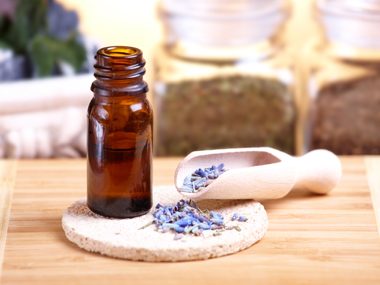
Sniff some fragrant spices
Pleasant aromas like lavender can alter the perception of pain, studies show. Japanese researchers found that lavender reduces levels of the stress hormone cortisol, which can make you feel relaxed and less aware of pain. But lavender isn’t the only pleasant aroma that works as a natural home remedy for arthritis pain relief. Korean researchers found that arthritis patients experienced less pain and were less depressed when they were exposed to the aromas of a variety of kitchen spices, including marjoram, rosemary, and peppermint. For a pain-soothing aromatherapy treatment, adding a teaspoon or so of one of these dried herbs to a quarter-cup of vegetable oil. Take a whiff frequently.

Wash dishes by hand
It sounds counterintuitive, but if your hands ache, this simple kitchen task can relieve arthritis pain. First, dipping your hands in hot water can help relax muscles and joints and relieve stiffness. Second, the exercise helps keep your hands and fingers mobile.
Are you at risk for osteoarthritis? Learn more about your risk here.
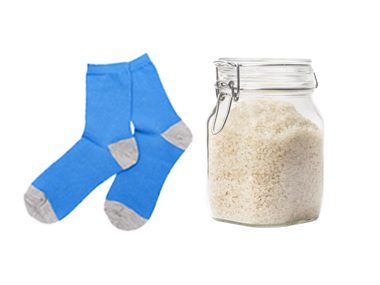
Make your own heat pad
Fill a cotton sock (don’t use a synthetic fiber, which can melt if heated) with any kind of uncooked rice from your pantry and seal it. Microwave on high for 2-3 minutes. When it cools down slightly but is still nice and warm, place it on a sore, stiff joint for arthritis pain relief. It should stay warm for about half an hour. You’ll love how the rice shapes to your body and provides soothing heat. If you have lavender or another fragrant herb on hand, toss it in the sock for a little relaxing aromatherapy, too.
Check out these other home remedies for arthritis doctors recommend.
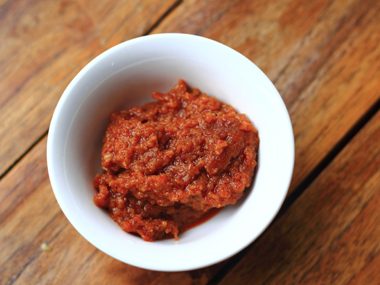
Make your own capsaicin cream
Now an over-the-counter treatment for arthritis and back pain, this old home remedy for arthritis pain relief reduces levels of a compound called substance P, which transmits pain signals to the brain. You can whip up some capsaicin cream by mixing a few dashes of ground cayenne with 2-3 teaspoons of olive oil. Apply it with gauze to unbroken skin at the painful joints several times a day. The first few doses will cause a mild burning sensation, but you’ll become desensitized after a week or so. Just keep it away from the mouth, eyes, and other mucous membranes.

Apply a chamomile tea poultice
Chamomile tea is an anti-inflammatory that may help ease arthritis pain. Brew a strong infusion using four chamomile tea bags in a cup or so of hot water. Steep, covered, for 20 minutes, then squeeze and remove tea bags. Soak a clean cloth in the liquid and apply to an achy joint.
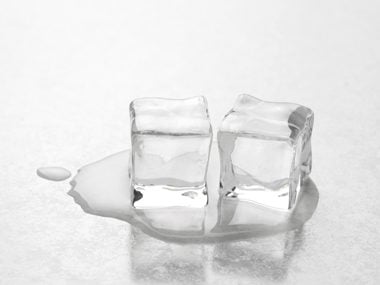
Give joints the cold-hot treatment
You’ll need two containers. Fill one with cold water and a tray of ice cubs; the other with hot water at a temperature you can tolerate to touch. Starting with cold, immerse the hurting joint for a minute, then switch to the hot water and immerse for 30 seconds. Then switch from cold to hot for about 15 minutes, immersing the affected joint in each for 30 seconds each time. Finish with cold water for a minute.
Dealing with an injury? This is when you should use ice, and when you need heat.

Go for a swim
Swimming has long been recommended as a good exercise for people with arthritis; the weightlessness from the water reduces the impact on your joints. A Taiwanese study found that working out in water significantly improves knee and hip flexibility, strength, and aerobic fitness. Meanwhile, an Australian study found that such programs also resulted in less pain and better overall function. Ask your local health club, hospital, or swimming pool about classes specifically designed for people with arthritis.
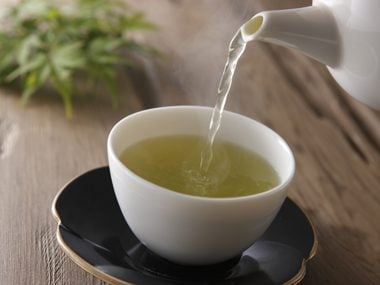
Sip 4 cups of green tea a day
Case Western Reserve University researchers gave mice the equivalent of four cups of green tea a day. Then they gave the mice a substance that would normally produce rheumatoid arthritis. The tea-drinking mice were far less likely to develop arthritis than the mice that drank water. Other research found that tea’s polyphenol antioxidants were anti-inflammatory, improved arthritis-related immune responses, and significantly reduced cartilage damage.
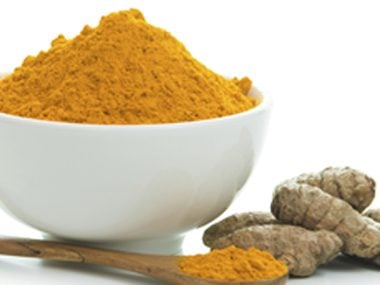
Stir in some turmeric
The yellow spice found in curries and ballpark mustard contains a powerful compound called curcumin, which inhibits enzymes and proteins that promote inflammation. Several studies have found that turmeric specifically reduces pain and swelling in arthritis patients. In one study of people with knee osteoarthritis, those who ate just 2 grams a day (less than a teaspoon) had pain relief and increased mobility equal to those who took 800 milligrams of ibuprofen. Sprinkle ½ teaspoon on rice or in vegetables daily. Or keep some packets of ballpark mustard in your pocket — they’re the perfect dose for arthritis pain relief.
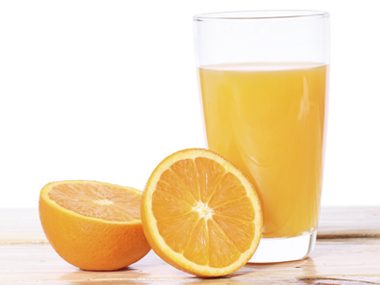
Make sure you get enough vitamin C
Vitamin C not only helps produce collagen, a major component of joints, but sweeps the body of destructive free radicals, which are harmful to joints. One of the best-known studies looking into vitamin C and arthritis found that people whose diets routinely included high amounts of vitamin C had significantly less risk of their arthritis progressing. Spread out your intake throughout the day because your body doesn’t store vitamin C; rather, it takes what it needs from the bloodstream at any given time and flushes out the rest. So a megadose in the morning doesn’t really do as much good as you would think. Sip citrus drinks or eat C-rich fruits and vegetables such as strawberries or melon, broccoli, or sweet peppers.
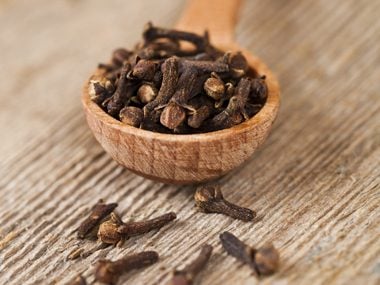
Add cloves to your diet
Cloves contain an anti-inflammatory chemical called eugenol that interferes with a bodily process that triggers arthritis. In one animal study, eugenol prevented the release of COX-2, a protein that spurs inflammation (the same protein that COX-2 inhibitor drugs like Celebrex target). Cloves also contain antioxidants, which are important in slowing the cartilage and bone damage caused by arthritis. Aim for ½ to 1 teaspoon a day.
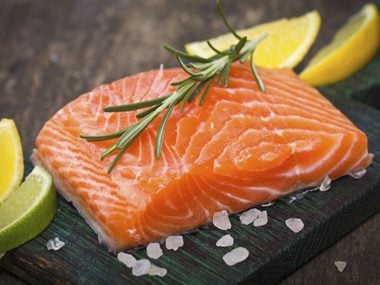
Load up on omega-3 fatty acids
Omega-3 fatty acids are excellent at relieving inflammation and soothing joints. Coldwater fish such as salmon and tuna are among the best dietary sources. But your body may need more omega-3s than you can consume from eating fish alone, so talk to your doctor about adding an omega-3 supplement. And always cook with canola oil over corn oil. Canola contains omega-3s while corn oil contains omega-6 fatty acids, which can actually make inflammation and arthritis pain worse.
These are the ten types of arthritis you could have—and how you can tell the difference.

Stick to low-allergenic foods
Food allergies may play a part in autoimmune illnesses like rheumatoid arthritis. Researchers at the University of Oslo in Norway found that people with the autoimmune disease had higher levels of antibodies to cow’s milk, eggs, codfish, and pork than people who didn’t have the disease. In one study, people with rheumatoid arthritis who followed a diet that eliminated common foods associated with allergies, such as grains (especially gluten-containing wheat products), nuts, milk, and eggs for 10 to 18 days had significant improvement in symptoms. When they started eating these foods again, they felt worse. Other studies have found that corn, wheat, oranges, oats, rye, eggs, beef, and coffee may also be problematic. Many of these foods help produce arachidonic acid, a body chemical linked to inflammation.
Here’s how to deal with frozen shoulder pain. (Yes, it’s a real thing!)
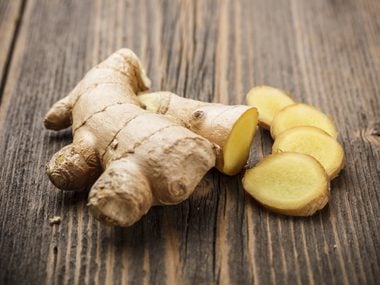
Make a ginger poultice
Applying crushed ginger to a painful join can deplete the body’s stores of substance P, a brain chemical that carries pain messages to your central nervous system. One study of 56 people found that ginger eased symptoms in 55 percent of people with osteoarthritis and 74 percent of those with rheumatoid arthritis. To make, peel and finely mince a 3-inch piece of fresh ginger. Mix with just enough olive oil to form a paste, then apply to the painful joint. Depending on where the pain is, you may need to wrap the ginger in place with a gauze or ace bandage. Leave in place for 10-15 minutes.

Turn up the tunes
Listening to your favorite music can ease pain (it may raise levels of hormones that reduce your pain sensitivity). In one Cleveland Clinic Foundation study of people with back, neck, or joint pain, one group was given a play list of relaxing tunes, a second group chose their own soundtrack, and a third didn’t get a musical prescription. The two music-listening groups had lower rates of arthritis pain, depression, and disability than the non-music group, which experienced an increase in pain. The study also indicated that the kind of music you listen to doesn’t matter, as long as you like it. People who chose their own tunes experienced a greater reduction in pain, depression, and disability than those who listened to generic relaxing music.

Walk barefoot
Going au naturel reduces the load on knee joints, minimizing pain and disability from osteoarthritis by 12 percent compared to walking with shoes, according to a Rush University Medical Center study of 75 people with osteoarthritis. When you must don shoes, find footwear that mimics the natural arch and heel contour, but doesn’t lift up the heel, which puts more pressure on the joints. Orthotics might be another option.
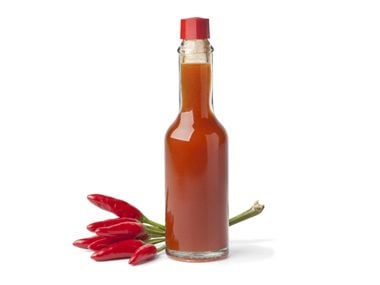
Switch over to spicy food when arthritis flairs
Spices such as cayenne pepper, ginger, and turmeric contain compounds that reduce swelling and block a brain chemical that transmits pain signals. Look up some spicy Mexican, Indian, and Thai recipes (or keep a bottle of hot sauce on your table at all times!).
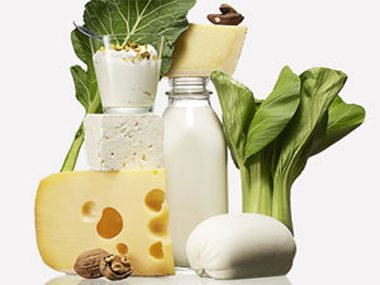
Up your calcium intake
Getting too little calcium raises the risk of osteoporosis, a brittle-bone condition that accelerates if you have rheumatoid arthritis. All women should get about 1,200 milligrams a day after age 50. Dairy is the most famous source of calcium, but cooked foods made with milk can be a surprisingly good source (one large waffle may contain up to 12 percent of your daily calcium requirement). Calcium is also found in such veggies as cauliflower, cabbage, Brussels sprouts, kale, kohlrabi, broccoli, and turnip greens. These foods have less calcium than dairy products, but contain a form that’s easier for the body to absorb.

Soak up some sun
Many people with arthritis are deficient in vitamin D, which appears to play a role in the production of collagen in joints. Studies find that getting more vitamin D may protect joints from osteoarthritis damage. To boost your D levels, get in the sun for 10 to 15 minutes, two to three times a week — that’s all it takes for your body to synthesize what it needs. Dairy products are also a great source of vitamin D.
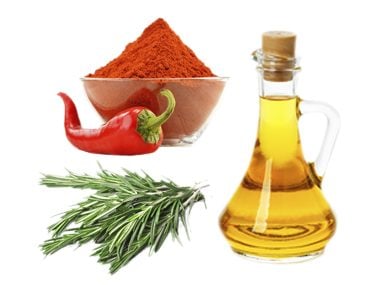
Make a spice rack joint rub
Add a little cayenne, rosemary, or thyme to ½ cup olive or vegetable oil and use it as a soothing rub. All these herbs have pain-soothing properties and offer natural arthritis pain relief.
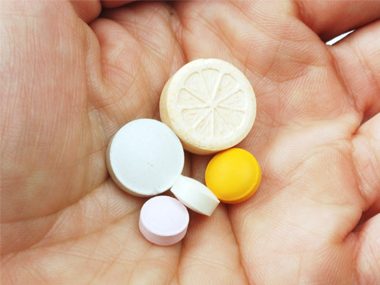
Consider these supplements
Ask your doctor whether any of these supplements might be right for you.
Ginger extract twice a day. Researchers from the University of Miami found ginger significantly reduced knee pain in patients with osteoarthritis of the knee, as well as improved how the knee worked. Ginger has anti-inflammatory effects, just like ibuprofen.
Fish-oil capsules. A British study found that 86 percent of people with arthritis who took cod liver oil had far fewer enzymes that cause cartilage damage compared to those who got a placebo. Plus, they had far fewer pain-causing enzymes. Cod liver oil is a fish oil, so your basic fish-oil supplement will do fine.
Vitamin E containing pure alpha-tocopherols. A German study found taking 1,500 IU of vitamin E every day reduced pain and morning stiffness and improved grip strength in people with rheumatoid arthritis as well as prescription medication.
Glucosamine/chondroitin. This combination supplement may provide long-term pain relief and slow the degeneration of cartilage. (It tends to help some patients and not others; if it’s working for you, you should experience relief within two to three months. If you don’t see a benefit by then, you’re probably not going to). It has also been found that glucosamine and chondroitin can actually repair damaged cartilage. After about a month you should be getting enough pain relief from the glucosamine to stop taking ibuprofen.
